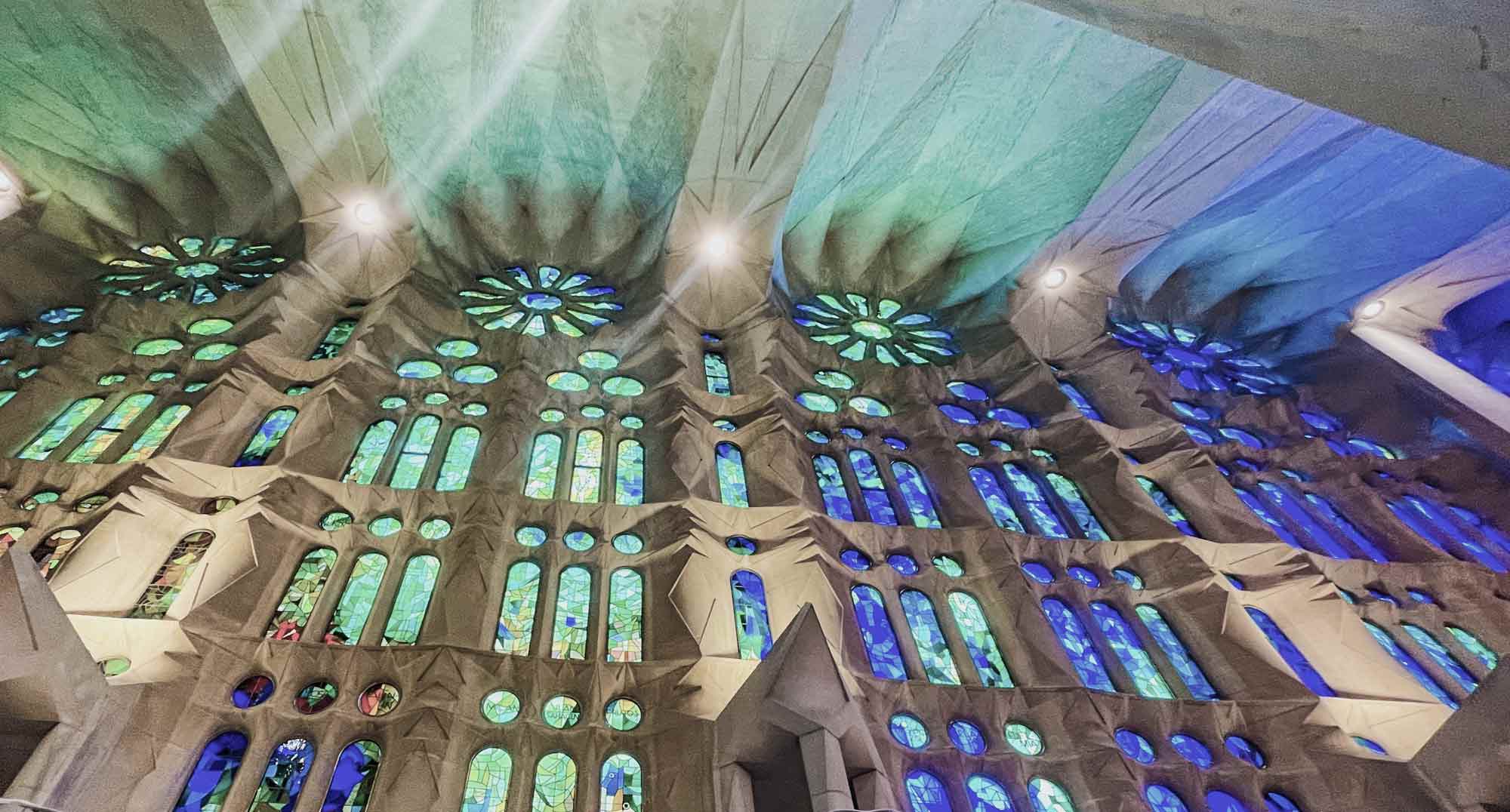REBEKAH COCHELL | GUEST
Architecture communicates through its structure. A government building with Greek columns speaks of democracy, justice, and order. The type of house we choose to live in can communicate our values and personalities. A church’s structure can tell us about the theology of the community that worships there.
Typically, I prefer ancient Gothic cathedrals to any “newer” church buildings. Within an hour from my German home are at least three such churches that date back to the 1100s.
Gothic cathedrals are symbolic “books.” They visually preach the gospel through the exterior of the structure’s flying buttresses and jambs (sculptures) and inside through stained glass windows, paintings, and more sculptures. Every aspect of a Gothic cathedral is symbolic, pointing to a reality greater than this present world. For a medieval worshipper, entering a cathedral was a symbolic entrance into heaven. An aspect of medieval semiotics (the study of signs and symbols) that is often overlooked is that symbols were more “real” than the present world to medieval worshippers. Since the reality of God and heaven was eternal and earthly existence was fleeting, symbols of the greater reality were more meaningful than the actual reality of Earth.
Recently, my husband and I took a trip to Barcelona, Spain where there is a cathedral which has become the second most visited tourist site in the world. The Sagrada Familia looks unlike any other building on Earth, with its myriad of neo-gothic spires that could easily have been created for a science fiction or fantasy film set. Sagrada Familia broke ground in the late 1800s and is still not finished due to a myriad of political and financial reasons.
I desired to see it but had no expectation that it could compare to a church built 800 years ago. I thought it would be gaudy based on some of the photos I saw.
I was mistaken.
An Otherworldly Experience
Walking into Sagrada Familia is unlike any other experience It was not gaudy; it was otherworldly and surreal. It was sublimely beautiful.
The entrance that I walked through is called the Nativity façade. This is the only section of the cathedral finished during the lifetime of the original architect. It is a visual overload of beauty, nature, emotion, and details focusing on the birth of Christ. As you walk through the entrance, you are almost blinded by the brightness inside. The interior is white, but the stained-glass windows illuminate the walls and columns as the light projected on the walls bathes the space in rainbow light. The multitude of columns resemble a forest, with a strong influence of Art Nouveau and medieval Gothic styles. I felt as if I was walking through the Elven Forest Lothlorien from Tolkien’s Middle Earth. True to the Gothic inspiration on which it was built, symbols were imbued into every aspect of the church. The tree-like columns and vaulted ceilings guide your eyes upwards toward heaven intentionally.
The famous Art Nouveau architect, Gaudi (who was not gaudy at all), planned the cathedral of “the future” and incorporated signs and symbols to help worshippers “walk into heaven” and contemplate deep spiritual truths as they enter the church. He was obsessed with gothic cathedrals and how they were built perfectly with purpose and beauty. True to the gothic inspiration that guided him, his main endeavor in Sagrada Familia was to build a Bible in stone. He wanted his cathedral to preach the Gospel. The Nativity façade does just that. As you gaze at the sculptures (although sculpture seems to be a poor description of the artistry), the details surrounding the birth of Christ come to life.
Upon entering the church, one is struck by the brightness of the white columns and walls and how the light flowing through the stained glass illuminates the interior with light and color. The light streaming through the glass represents Christ, the Light of the World. While each color has spiritual significance, the combination represents a rainbow. Not only does the rainbow symbolize God’s promise to Noah, but it also refers to the vision of John in Revelations 4:3 “And he who sat there had the appearance of jasper and carnelian, and around the throne was a rainbow that had the appearance of an emerald.”
A Foretaste of Heaven
Walking into Sagrada Familia is a symbolic “walking into” heaven. And it is breathtakingly beautiful. I was reminded that as Christians, we are strangers in this world. We are travelers, pilgrims, transients, aliens out of place. The longing the beauty stirs in our hearts is a reminder that we were made for another world. A reality in which we are in the presence of God, the source of all beauty, truth, goodness, and love.
But in all its glory, Sagrada Familia is just a shadow, a glimpse, a foretaste of what heaven will be like. We will experience the beauty and perfection of heaven, but more importantly, we will be in the presence of God. Many people have this idea that heaven will be boring, an endless floating around on clouds. But that is not what the Bible reveals about heaven. It will be a great feast, a huge party, where everything is beautiful, and everyone will be filled with unbelievable joy. The tears of life will be forgotten.
There are moments in this life when we experience a taste of this beauty and joy, and it stirs our hearts causing us to long for something we can’t explain with words. I experienced it walking into the Sagrada Familia. I have felt it while viewing a Rembrandt and the first time I viewed the Alps (and every time I have seen them since.)
Sometimes there are moments of this intense beauty in our everyday lives. A newborn’s sigh, a hug from a dear friend, a quiet meander in the forest, the nightly sunsets painting our skies.
C. S. Lewis described these experiences as Joy. He wrote, “All Joy reminds. It is never a possession, always a desire for something longer ago or further away or still ‘about to be’.”[1] This Joy is an unsatisfied desire which becomes more desirable than any other satisfaction. In “Surprised by Joy”, he described the times he felt this longing while reading literature, experiencing nature, and viewing art. And these experiences of “joy” eventually led him to a realization that God must exist. He understood that these moments of Joy were just foretastes of God and His paradise, our true Home.
When we encounter beauty, a glimpse of heaven, I hope it serves as a reminder that we are meant for more. A reminder that we are earthly beings only for a short time and we are meant to one day be in the presence of God, the source of all beauty and joy.
*Image courtesy of Rebekah Cochell
[1] Lewis, C. S. Surprised by Joy. 1955. Harcourt, Brace & Co. New York.

Rebekah Cochell
Rebekah is a graduate of Liberty University (MFA: School of Digital and Studio Art: Graphic Design). She is an adjunct professor for Liberty University’s Online School of Communication and the Arts. Currently living in Germany, she is married to James, an Army Chaplain and teaching elder of the PCA. They have three grown children, Ransom, Ethan, and Rose. Rebekah integrates art activities in both the Bible studies she teaches and the chaplain training events that she co-teaches with her husband. She enjoys traveling, photography, painting, and reading the classics.

